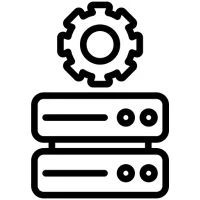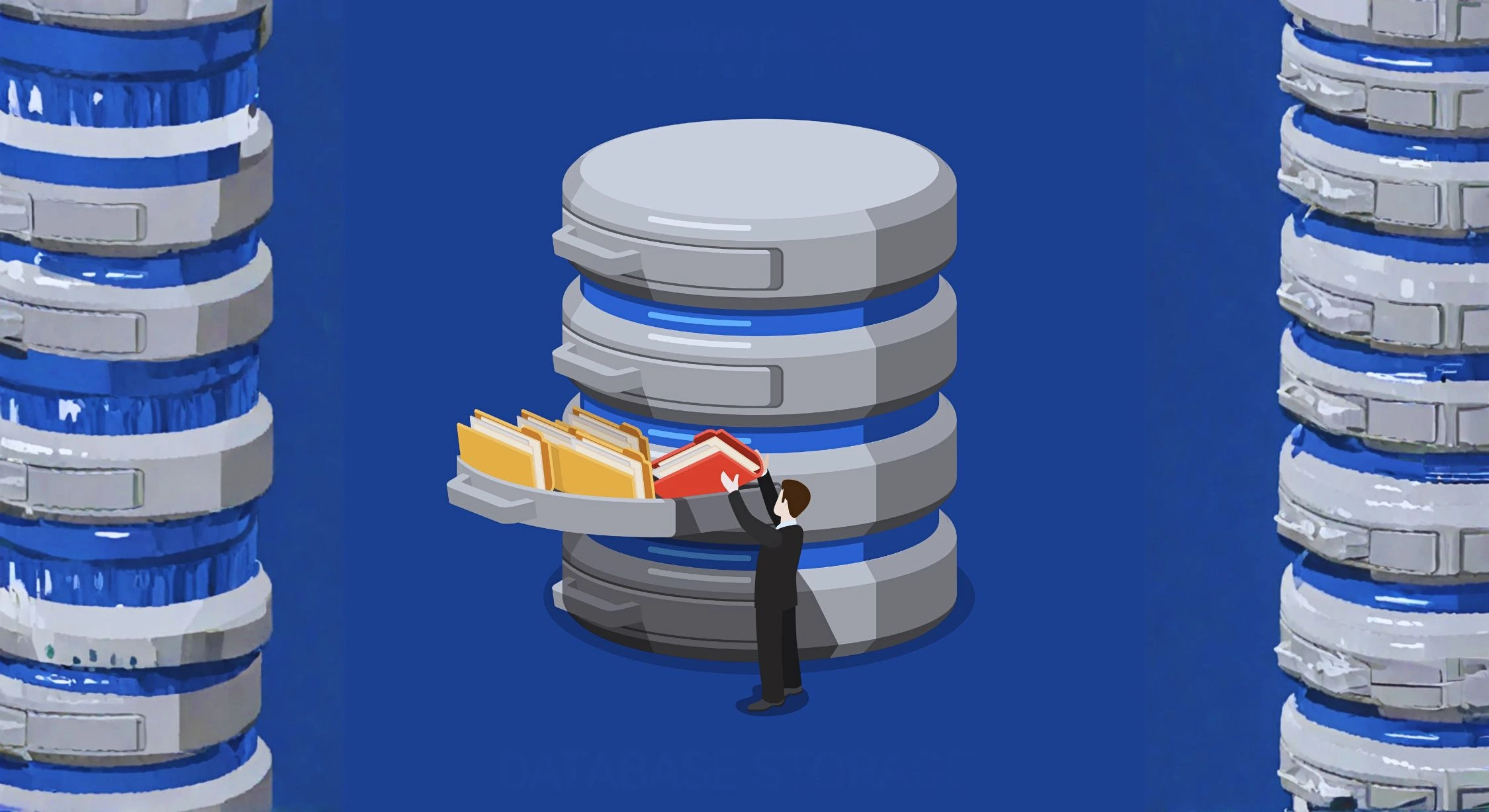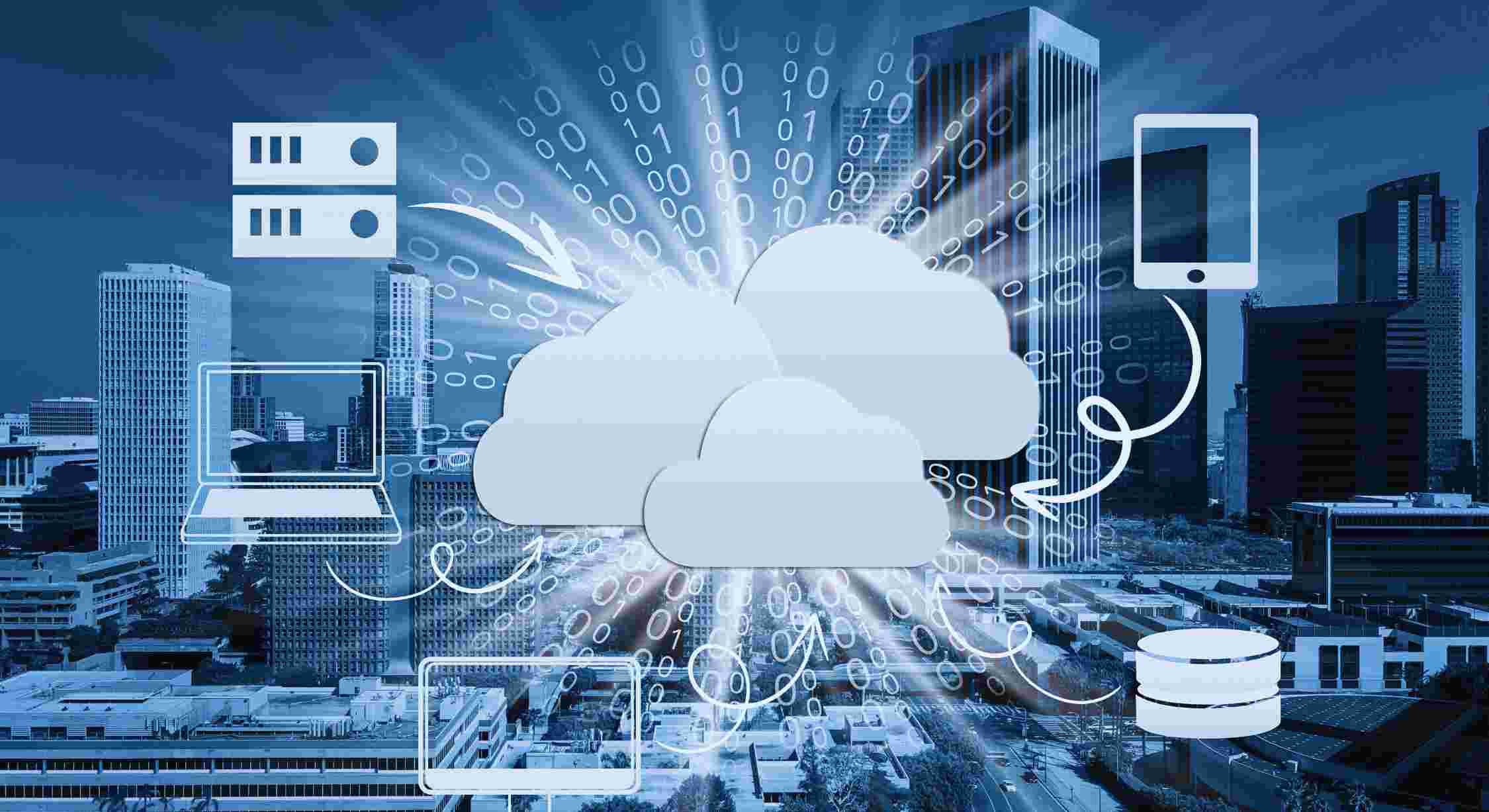At Experion Technologies, we help global enterprises modernize their data ecosystems to unlock scalability, agility, and innovation through cloud-native, AI-ready, and future-proof data platforms.
Modernization is at the heart of every digital transformation journey. As organizations strive to become data-driven, their ability to harness, process, and act on information in real time becomes a strategic differentiator. However, many enterprises are still reliant on legacy data systems, monolithic architectures designed for a different era of computing.
These legacy systems were once reliable workhorses, but today they have become bottlenecks. They struggle to manage the velocity, variety, and volume of modern data, hindering agility and innovation. This is why forward-looking businesses are embracing data platform modernization, a comprehensive approach to reengineering their data platforms for the cloud era.
Browse the Sections:
- Understanding a Data Platform
- Differences Between Traditional and Modern Data Platforms
- What is Data Platform Modernization?
- Platform Modernization vs Migration
- The Pain Points: Why Legacy Systems Are Holding You Back
- Why Modernize Data Platforms?
- Key Components of Data Platform Modernization
- Steps in Data Platform Modernization
- Benefits of Modernizing Your Data Platform
- Challenges in Data Platform Modernization
- Modernization Trends and Technologies
- Choosing the Right Partner for Data Platform Modernization
- How Experion Can Offer Support in Data Platform Modernization?
- Case Study
- Conclusion
Understanding a Data Platform
 A data platform is the foundational system that enables organizations to collect, store, manage, process, and analyze data from various sources. It serves as the central nervous system for digital enterprises, connecting applications, analytics, and decision-making processes.
A data platform is the foundational system that enables organizations to collect, store, manage, process, and analyze data from various sources. It serves as the central nervous system for digital enterprises, connecting applications, analytics, and decision-making processes.
A modern data platform typically includes the following core components:
- Data Storage: Secure and scalable repositories that house structured, semi-structured, and unstructured data.
- Data Processing: Frameworks and engines that transform raw data into meaningful information.
- Data Analytics: Tools and technologies that empower users to visualize insights, identify trends, and drive business outcomes.
When designed and implemented effectively, a modern data platform becomes the backbone of a data-driven enterprise, supporting everything from operational efficiency to advanced AI/ML applications.
Differences Between Traditional and Modern Data Platforms
| Aspect | Traditional Data Platform | Modern Data Platform |
| Architecture | Monolithic, on-premise systems | Cloud-native, modular, and distributed |
| Scalability | Limited and resource-intensive | Elastic and virtually unlimited |
| Data Handling | Structured data only | Handles structured, semi-structured, and unstructured data |
| Processing | Batch-oriented | Real-time and event-driven |
| Integration | Manual and siloed | Automated and API-driven |
| Analytics | Retrospective reporting | Predictive and prescriptive insights |
| Maintenance | High operational overhead | Automated, self-optimizing systems |
Traditional systems were not designed for the era of AI, IoT, or real-time analytics. In contrast, a modern data platform leverages cloud-native platforms and modern data management frameworks to deliver flexibility, scalability, and intelligence at speed.
What is Data Platform Modernization?

Data Platform Modernization refers to the strategic transformation of an organization’s data infrastructure, processes, and tools to align with modern business requirements. It involves re-architecting or migrating legacy systems to cloud-native, scalable, and AI-ready platforms that enable real-time analytics, automation, and innovation.
Modernization goes beyond technology upgrades, it is about data platform transformation, aligning infrastructure with business goals and empowering organizations to leverage data as a strategic asset.
Platform Modernization vs. Migration
While often used interchangeably, platform modernization and migration are distinct concepts.
- Migration involves moving existing data and applications from one environment (often on-premise) to another (like the cloud).
- Modernization, however, is transformational. It reimagines data architecture, governance, and operations for scalability, agility, and intelligence.
In other words, migration is a step within modernization, but modernization itself represents a broader shift toward data driven platform modernization that supports AI, analytics, and continuous innovation.
The Pain Points: Why Legacy Systems Are Holding You Back
Architectural Roadblocks
- Rigidity and Inflexibility
Legacy data systems are inherently rigid. They rely on tightly coupled components, making it difficult to introduce new tools or technologies. This rigidity limits innovation and slows time-to-market for new data initiatives.
- Data Silos and Fragmentation
Older platforms often lead to fragmented data storage and siloed operations. Teams struggle to access or integrate data across departments, leading to inconsistencies, duplication, and governance issues.
- Inability to Handle Scale
As data volume grows exponentially, legacy architectures fail to scale efficiently. Traditional storage and processing systems cannot manage today’s demands for real-time analytics and global data accessibility.
Operational and Financial Drain
- High Operational Costs
Maintaining on-premise legacy systems is resource-intensive. Continuous hardware upgrades, licensing costs, and manual management inflate operational expenditure (OpEx).
- Performance Bottlenecks
Outdated platforms cannot keep up with the speed of modern applications. Long processing times, limited automation, and system latency create bottlenecks that impede data availability and responsiveness.
The Failure to Future-Proof
- Lack of AI/ML Readiness
Modern businesses rely on predictive and prescriptive analytics powered by AI and machine learning. Legacy data platforms lack the processing power, flexibility, and data structures necessary to support these workloads.
- Governance and Security Gaps
Traditional systems often fall short of today’s stringent data protection and compliance requirements. Without modern governance frameworks, organizations risk non-compliance and data breaches.
Why Modernize Data Platforms?
 The journey toward data platform modernization is no longer a matter of if—it’s a matter of when. As organizations accelerate their digital transformation initiatives, data has emerged as the most valuable enterprise asset. However, the infrastructure that manages this data often lags behind modern expectations. Legacy systems, while once reliable, now struggle to meet the demands of real-time analytics, scalability, and automation that define today’s digital economy.
The journey toward data platform modernization is no longer a matter of if—it’s a matter of when. As organizations accelerate their digital transformation initiatives, data has emerged as the most valuable enterprise asset. However, the infrastructure that manages this data often lags behind modern expectations. Legacy systems, while once reliable, now struggle to meet the demands of real-time analytics, scalability, and automation that define today’s digital economy.
Modernizing the data platform is about more than upgrading technology, it’s about empowering the enterprise to be truly data-driven. It’s a strategic investment in agility, resilience, and intelligence. Let’s explore why modernization is not just beneficial, but essential.
Challenges with Legacy Systems
Legacy data systems were built for a different era, one defined by structured data, batch processing, and limited connectivity. In contrast, the modern enterprise operates in a world of streaming data, multi-cloud ecosystems, and AI-driven insights. These older platforms present several challenges that hinder innovation and scalability.
- Scalability Limitations
Traditional on-premises data warehouses often require manual scaling, which is both time-consuming and costly. As data volumes surge exponentially, these systems cannot elastically adjust to fluctuating demands. This results in bottlenecks during peak usage periods and underutilization during off-peak hours. In contrast, modern data platforms built on cloud-native architectures scale seamlessly and automatically, ensuring consistent performance and cost efficiency.
- High Maintenance Costs
Maintaining legacy systems involves heavy infrastructure management, licensing fees, and manual interventions. Each upgrade or integration introduces new complexities and costs. These expenses accumulate into a high Total Cost of Ownership (TCO), diverting resources away from innovation. By adopting platform modernization, enterprises can transition to cloud-based data platforms with automated maintenance, significantly reducing operational overheads.
- Lack of Real-Time Analytics
Legacy systems typically operate on batch data processing cycles, producing delayed insights. In a world where real-time decision-making drives competitive advantage, this delay can be detrimental. Modern data platforms enable continuous data ingestion and instant analytics, empowering business leaders with up-to-the-minute visibility into operations, customer behavior, and market dynamics.
- Security and Compliance Risks
Outdated systems are more vulnerable to breaches and often lack compliance capabilities aligned with modern regulations such as GDPR and HIPAA. A data modernization initiative introduces robust security protocols, encryption, and governance frameworks embedded natively into cloud-native platforms, ensuring both compliance and trust.
- Limited Flexibility and Integration
Legacy data platforms typically rely on rigid architectures that make integrating new tools, applications, or AI/ML models a complex task. They hinder innovation by isolating data and preventing interoperability across systems. In contrast, a modern data platform leverages APIs, microservices, and modular design for effortless integration and adaptability to emerging technologies.
Business Drivers for Modernization
Organizations embarking on data platform transformation are motivated by clear, measurable business imperatives that align directly with growth, efficiency, and innovation.
- Accelerate Decision-Making
In fast-moving markets, decisions must be driven by data, not instinct. Modern data platforms unify diverse data sources and deliver real-time, actionable insights to business leaders. With integrated analytics and AI-driven dashboards, enterprises can identify opportunities, mitigate risks, and make informed decisions faster than competitors.
This data-driven platform modernization ensures that decision-making is no longer hindered by latency or siloed data, but is powered by an always-on, intelligent ecosystem.
- Reduce Costs
Cost optimization is one of the strongest financial drivers for platform modernization. Cloud-native infrastructures eliminate the need for expensive on-premises hardware, while automation minimizes human intervention. Scalable architectures allow businesses to pay only for what they use, driving down infrastructure and operational expenses. Over time, the ROI of data modernization manifests through lower maintenance costs, faster deployment cycles, and improved operational efficiency.
- Enhance Customer Experience
Customer expectations are evolving rapidly. Delivering personalized, real-time experiences requires instant access to accurate, unified data. Modernizing the data platform allows organizations to integrate data from multiple touchpoints, CRM systems, digital channels, and IoT devices, to create a 360-degree customer view.
This unified data approach empowers enterprises to predict customer needs, tailor interactions, and strengthen engagement through data-driven insights. The result is a superior, consistent, and personalized customer experience.
- Drive Innovation
A modern data platform lays the foundation for innovation by supporting AI/ML integration, predictive analytics, and automation. These capabilities enable enterprises to transform data into foresight, uncover new revenue opportunities, and accelerate digital agility.
For example, AI models can predict market trends, optimize supply chains, or automate decision-making in real time, but only if supported by a scalable, intelligent data infrastructure. Thus, data platform modernization becomes a catalyst for enterprise innovation and continuous transformation.
- The Strategic Imperative
In essence, modernizing the data platform is not a technical upgrade—it’s a strategic imperative for sustainable growth. It allows enterprises to evolve from reactive, siloed operations to data-driven, intelligent ecosystems that anticipate change and respond dynamically.
By investing in data platform modernization, organizations can reduce inefficiencies, unlock new insights, and accelerate their journey toward digital maturity. The result is a future-ready enterprise, resilient, innovative, and equipped to compete in an increasingly data-centric world.
Modernization is not about replacing technology; it’s about empowering the business to think, act, and grow intelligently.
Explore Experion’s Modern Data Platform Solutions Today
Key Components of Data Platform Modernization
Cloud Adoption
The cloud is the cornerstone of platform modernization. Migrating to public, private, or hybrid cloud environments offers elasticity, scalability, and cost-effectiveness.
- Public Cloud: Offers on-demand scalability and managed services.
- Private Cloud: Provides enhanced security and control for sensitive data.
- Hybrid Cloud: Combines both to deliver flexibility and compliance.
Cloud adoption also enables cloud-native platforms that support modern data management and continuous deployment at scale.
Data Architecture Modernization
Legacy monolithic architectures are being replaced by modular and distributed designs that enable agility. Modern architectures leverage:
- Data Lakes: Centralized repositories for raw, diverse data.
- Data Warehouses: Structured storage for analytics-ready datasets.
- Lakehouses: Hybrid architectures that unify the best of both worlds.
This data modernization journey allows enterprises to seamlessly handle structured and unstructured data, improve accessibility, and accelerate analytical performance.
Data Integration and ETL/ELT Modernization
Traditional ETL pipelines struggle with modern data velocity. Today’s data platform transformation embraces real-time data streaming and modern ETL/ELT tools that automate ingestion and processing.
Real-time integration ensures that analytics reflect the current state of the business, enabling faster and more informed decisions.
Advanced Analytics and AI Readiness
A modern data platform must be built for the future. By integrating AI and machine learning capabilities, organizations can move from reactive to predictive decision-making.
Data platform modernization enables AI-readiness, allowing enterprises to run complex models, automate analytics, and support advanced workloads seamlessly.
Security, Compliance, and Governance
Modern data governance frameworks are essential to maintain trust and regulatory compliance. From GDPR to HIPAA, enterprises must ensure data protection, traceability, and ethical use.
A cloud-native, modern data platform integrates security by design, embedding identity management, access controls, and encryption at every layer.
At Experion Technologies, we help enterprises modernize their data ecosystems by combining cloud-native engineering, modern governance frameworks, and AI-readiness to build scalable, secure, and intelligent data platforms.
Steps in Data Platform Modernization
- Assessment and Audit
The modernization journey begins with a deep evaluation of current systems. This involves analyzing architecture, identifying bottlenecks, and assessing data maturity to determine readiness.
- Strategy and Roadmap Development
Modernization should align with business goals, not just IT objectives. Defining a roadmap involves choosing the right architecture, cloud strategy, and data management approach that aligns with the organization’s vision.
- Migration Execution
Migration can take different forms:
- Lift-and-Shift: Moving existing workloads to the cloud with minimal changes.
- Re-Architecture: Redesigning systems to fully leverage modern capabilities.
Best practices include minimizing downtime, ensuring data integrity, and adopting phased rollouts for risk mitigation.
- Testing and Optimization
Comprehensive performance testing validates that the new platform meets business expectations. Data quality checks, latency testing, and failover simulations ensure operational readiness.
- Monitoring and Continuous Improvement
Modernization is not a one-time initiative. Continuous monitoring, observability, and iterative optimization ensure that the modern data platform evolves alongside business needs and emerging technologies.
Benefits of Modernizing Your Data Platform
- Scalability and Performance: Adapt instantly to changing workloads and data volumes.
- Operational Efficiency: Reduce maintenance overhead through automation and managed services.
- Real-Time Decision-Making: Enable analytics that empower leaders with instant, actionable insights.
- Enhanced Security and Compliance: Protect sensitive data with modern security frameworks.
- AI and ML Enablement: Prepare your data environment for predictive intelligence and next-gen analytics.
Challenges in Data Platform Modernization
While the advantages of data platform modernization are substantial, ranging from agility and scalability to advanced analytics, organizations must navigate a set of strategic and operational challenges during implementation. Recognizing these obstacles early helps enterprises design mitigation strategies and ensure a smoother data platform transformation journey.
- High Upfront Investment
Modernizing a data platform is a transformative initiative that often requires significant upfront investment. The transition involves costs related to infrastructure upgrades, cloud adoption, licensing, and reskilling employees. Additionally, aligning modernization with business goals demands executive sponsorship and long-term vision.
However, this investment should be viewed not as an expense but as a strategic enabler. Organizations that modernize successfully often realize long-term savings through reduced operational overhead, improved performance, and faster innovation cycles. A clearly defined business case and ROI framework are essential to secure leadership buy-in and maintain momentum throughout the modernization process.
- Legacy Dependencies
Legacy systems rarely exist in isolation, they are embedded within a web of enterprise applications, data warehouses, and operational tools. This interdependence can make integration with new, modern data platforms highly complex. Migrating data while ensuring compatibility with legacy interfaces, workflows, and user expectations demands meticulous planning.
Many organizations adopt a phased modernization approach, running hybrid environments temporarily while gradually shifting workloads to modern, cloud-native architectures. The goal is to minimize disruption while ensuring continuity of critical business functions.
- Data Migration Risks
Data migration is one of the most technically challenging components of data modernization. The risks include data loss, corruption, quality degradation, and downtime. Inconsistent data formats or incomplete mapping between old and new schemas can lead to integrity issues that affect analytics accuracy.
To mitigate these risks, enterprises should invest in robust migration tools, rigorous testing frameworks, and backup strategies. Employing automated ETL/ELT pipelines and validation scripts ensures smoother transitions and consistent data quality. Expert oversight is critical to ensure that no vital data is lost in translation during the migration process.
- Change Management
Technology modernization is only part of the equation; people and processes play an equally vital role. Moving from legacy systems to a modern data platform introduces new workflows, tools, and responsibilities. Teams accustomed to traditional systems may resist change or lack the skills required to manage new architectures.
Successful modernization requires a structured change management framework, focusing on training, communication, and culture building. Upskilling employees in areas such as cloud engineering, data governance, and modern data management ensures a confident, capable workforce that can harness the potential of modernized systems.
True modernization requires more than new technology, it requires vision, alignment, and expertise.
Partner with Experion for a Seamless Data Platform Modernization Journey
Modernization Trends and Technologies

The landscape of data platform modernization is evolving rapidly. As enterprises adapt to new market realities and digital transformation imperatives, several key trends are defining how organizations modernize their data ecosystems. These trends underscore a fundamental shift toward cloud-native platforms, intelligent automation, and decentralized data ownership.
Cloud-Native Data Platforms
The adoption of cloud-native data platforms represents one of the most significant transformations in enterprise IT. By leveraging the elasticity and on-demand scalability of the cloud, organizations can dynamically manage workloads, reduce infrastructure costs, and deploy updates faster.
Cloud-native architectures also enable containerization, microservices, and serverless computing, offering flexibility unmatched by legacy environments. These platforms empower enterprises to build resilient, adaptive, and globally scalable data ecosystems that evolve alongside business needs.
Whether through AWS, Azure, or Google Cloud, cloud-native modernization provides a foundation for data driven platform modernization that supports real-time analytics, AI workloads, and continuous innovation.
AI-Powered Data Management
Artificial intelligence is redefining how data is governed, processed, and secured. AI-powered data management introduces automation at every stage of the data lifecycle—from data curation and cleansing to anomaly detection and compliance auditing.
Machine learning algorithms can automatically identify patterns in data flows, detect irregularities, and even predict potential failures or breaches. This not only improves data quality but also accelerates decision-making.
AI-driven tools in modern data management streamline metadata tagging, lineage tracking, and predictive governance, ensuring that organizations maintain transparency, compliance, and trust in their data assets.
Multi-Cloud and Hybrid Cloud Strategies
Enterprises are increasingly moving toward multi-cloud and hybrid cloud architectures to achieve flexibility, redundancy, and compliance across geographies. Relying on a single cloud vendor can introduce risks related to cost, performance, and regulatory constraints.
A multi-cloud approach enables businesses to select the best tools and services from multiple providers, optimizing performance and reducing vendor lock-in. Meanwhile, hybrid cloud environments allow organizations to maintain sensitive data on-premise while leveraging cloud resources for scalability and analytics.
Together, these strategies provide the ideal balance between control, compliance, and innovation, aligning perfectly with modern enterprise data needs.
Data Mesh and Decentralized Architectures
The data mesh paradigm represents a radical shift in how enterprises manage and share data. Instead of treating data as a centralized asset controlled by a single IT function, a data mesh decentralizes ownership—giving each business domain responsibility for its own data products.
This approach enhances agility, encourages accountability, and promotes cross-functional data collaboration. It aligns well with organizations adopting modern data platform strategies that prioritize autonomy and scalability.
By implementing decentralized architectures, enterprises can achieve faster innovation cycles and better align data insights with business objectives.
Automation in Data Operations
As data environments grow more complex, automation is becoming indispensable. Automation in data operations (DataOps) ensures efficiency, consistency, and reliability throughout the data lifecycle.
Tasks like pipeline orchestration, data validation, monitoring, and remediation can be fully automated, reducing human error and improving response times. Automated workflows enhance observability, enforce governance standards, and allow teams to focus on strategic, value-driven activities rather than routine maintenance.
When combined with AI and analytics, automation transforms data operations into self-optimizing ecosystems, paving the way for continuous improvement and innovation.
Modernization is not a destination,it’s a continuous evolution toward smarter, faster, and more intelligent data ecosystems.
Discover How Experion Accelerates Modern Data Platform Transformation
Choosing the Right Partner for Data Platform Modernization
Selecting the right partner is critical to achieving successful outcomes. Consider the following:
- Expertise and Experience: Look for proven success in large-scale modernization initiatives.
- Technology Stack: Ensure compatibility with your cloud and data ecosystems.
- Strategic Approach: Partners should align with your long-term business goals, not just technical objectives.
The right partner accelerates modernization by combining deep domain expertise, best practices, and automation frameworks.
The Importance of Choosing the Right Partner
 Given these challenges, selecting the right technology partner becomes pivotal to success. A partner with expertise in platform modernization can help assess readiness, architect the right solutions, and manage complex transitions with minimal disruption. Their experience ensures that modernization is not just a technical exercise but a strategic transformation that aligns with the organization’s business goals and growth trajectory.
Given these challenges, selecting the right technology partner becomes pivotal to success. A partner with expertise in platform modernization can help assess readiness, architect the right solutions, and manage complex transitions with minimal disruption. Their experience ensures that modernization is not just a technical exercise but a strategic transformation that aligns with the organization’s business goals and growth trajectory.
How Experion Can Offer Support in Data Platform Modernization?
 At Experion Technologies, we collaborate with enterprises to drive data-driven platform modernization that aligns technology with strategic growth.
At Experion Technologies, we collaborate with enterprises to drive data-driven platform modernization that aligns technology with strategic growth.
Our teams specialize in:
- Designing cloud-native architectures that enhance scalability and flexibility.
- Implementing modern data lakes, warehouses, and lakehouses for unified analytics.
- Integrating governance and compliance frameworks to safeguard data integrity.
- Enabling AI and machine learning capabilities to maximize business intelligence.
Case Study: Transforming Legacy Data Infrastructure with Informatica Cloud Integrtion
Client Background & Challenge
A leading global enterprise (name withheld for confidentiality) was operating on a legacy on-premises data platform that struggled to support modern analytics, real-time decision-making, and scalability. Their data warehouse architecture was rigid, siloed, and lacking native support for AI/ML workloads.
As business demands increased, the system showed signs of strain: long batch processing windows, costly maintenance, and limited ability to modernize. The organization recognized that platform modernization was no longer optional but essential. They embarked on a journey toward data platform modernization and a modern data platform infrastructure to support their long-term digital transformation vision.
Objectives
- Transition from legacy systems to a cloud-native, modern data platform
- Enable real-time data integration and processing
- Reduce operational costs and accelerate analytics
- Lay groundwork for AI/ML readiness and data-driven platform modernization
Solution: Informatica Cloud Data Integration with Experion
Experion Technologies led the modernization project by adopting Informatica Cloud Data Integration as a foundational element in the data modernization strategy. This approach allowed seamless, secure connectivity across on-prem, cloud, and hybrid environments.
Key elements of the solution:
- Cloud-first Integration Architecture
We restructured the data ingestion pipelines using Informatica’s cloud-native connectors and integration patterns, supporting both real-time streaming and batch modes. This shift accelerated data platform transformation by enabling timely data flow across systems. - Modern ETL/ELT Processes
Legacy ETL scripts were replaced with scalable, flexible ETL/ELT frameworks leveraging Informatica’s data mapping, transformation, and orchestration capabilities. This modernization reduced latency and simplified pipeline maintenance. - Data Governance and Quality Controls
To support modern data management, Experion incorporated comprehensive data quality checks, lineage tracking, and governance rules within the Informatica pipelines. This ensured reliability, compliance, and data trust across the enterprise. - Hybrid & Multi-Cloud Compatibility
The solution supported connectivity across public cloud, private cloud, and on-prem systems, creating a hybrid architecture that matched the organization’s risk, compliance, and performance requirements.
Results & Benefits
- Reduced Processing Time by 60%
Near-instant ingestion and transformation replaced overnight batch loads, accelerating analytics availability. - Cost Efficiency Improvement
Infrastructure and licensing optimizations drove a 30% reduction in operational expenses. - Scalable & Future-Ready Platform
The architecture now supports dynamic workloads and AI/ML integration seamlessly. - Stronger Governance & Compliance
Built-in data lineage and validation improved auditability and regulatory readiness. - Unified, Modern Data Platform
The enterprise achieved a cohesive, cloud-native data ecosystem, fulfilling their vision of data platform modernization and data-driven platform modernization.
Final Summary
By leveraging Informatica Cloud Data Integration in partnership with Experion, the client transcended legacy limitations and embraced a platform modernization path aligned with modern data strategy. The newly built modern data platform equips the business to deliver real-time insights, support AI initiatives, and remain agile in a data-first world.
Experion Technologies continues to support the client in optimizing data operations, evolving architecture, and driving continuous data platform transformation.
Conclusion
Data Platform Modernization is no longer a technical upgrade—it is a business imperative. As the pace of innovation accelerates, organizations that continue to rely on legacy systems risk falling behind more agile competitors.
By embracing data modernization, enterprises gain the scalability, intelligence, and agility needed to compete in a data-first world.
The future belongs to organizations that see data not just as an asset, but as a strategic enabler of growth and innovation.
At Experion Technologies, we help enterprises unlock the full potential of their data by building modern, cloud-native, and intelligent data platforms that power tomorrow’s digital businesses.


